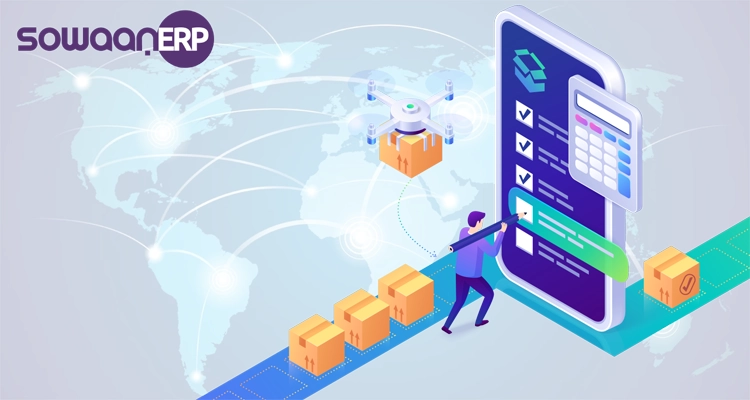
Customer relationship management (CRM) systems are vital tools used by businesses all over the world. Even ERP software companies in Saudi Arabia rely on CRM systems to manage interactions with their customers effectively.
These systems are designed to streamline communication, simplify tracking of client information, and enhance customer service. By centralizing customer data, CRM systems allow businesses to understand their customers better and respond to their needs more effectively. They play a key role in developing marketing strategies, improving customer retention, and increasing sales. In essence, CRM systems help businesses build strong, lasting relationships with their customers, which is critical for long-term success. Thus, whether a business is large or small, having a robust CRM system in place is becoming increasingly important in today’s competitive marketplace.
How to operate CRM systems?
Understanding CRM systems
A CRM system operates by collecting, organizing, and managing customer information. This data can be anything from contact details to purchase history and interaction records. The main goal is to enhance customer service and foster stronger relationships. CRM systems also help businesses understand their customers better, leading to improved marketing strategies. They allow for the tracking of customer activity, enabling businesses to anticipate needs and provide personalized service.
Furthermore, a CRM system acts as a single source of truth, centralizing customer data and making it accessible across different departments. This promotes seamless collaboration and ensures everyone is on the same page regarding customer interactions. Ultimately, a well-utilized CRM system can lead to increased customer satisfaction, loyalty, and consequently, business growth.
Step-by-step guide to operating CRM systems
Here is how a CRM system works.
Step 1: Data Collection
The first step in how a CRM system works is data collection. When a customer interacts with your business, whether it’s through a purchase, an online query or a phone call, that information gets logged into the CRM system. This also includes customer feedback and complaints, which are crucial for improving products and services. Thus, every interaction becomes a learning opportunity for the business.
Step 2: Data Organization
Once the data is collected, the CRM software organizes it. This allows for easy access and analysis. It sorts data based on various factors, like customer preferences, purchase history, and more. This organization of data helps businesses segment their customers, allowing for targeted marketing and sales efforts. It also assists in managing customer relationships more efficiently.
Step 3: Data Analysis
CRM data analysis is the next phase. The system analyzes customer data to gain insights about customer behavior and preferences. This helps businesses tailor their services and products to meet customer needs better. The insights gained can guide product development, lead to more effective marketing campaigns, and improve customer service.
Step 4: Implementing Insights
After analysis, the CRM system aids in implementing these insights. This means using the data to improve customer service, marketing strategies, and sales efforts. It helps businesses anticipate customer needs and respond proactively. By applying these insights, businesses can enhance customer satisfaction, increase loyalty, and drive sales growth.
Step 5: Monitoring and Updating
Lastly, a CRM system monitors customer interactions constantly. It updates customer profiles with new data from each interaction. This ensures the business always has up-to-date information about its customers. This continuous updating of information enables businesses to respond quickly to changes in customer behavior or preferences, ensuring that they can always meet their customers’ needs effectively.
Why purchase CRM software?
Now that we understand how a CRM system operates, let’s look at why you should purchase CRM software.
A good CRM system enhances customer service and boosts sales. It also improves internal communication and helps businesses make data-driven decisions. Purchasing CRM software can bring a host of benefits to your business. For starters, it can help you track customer interactions across multiple channels, providing a complete picture of their journey. This comprehensive view can help your team identify opportunities for upselling and cross-selling, enhancing revenue generation. Additionally, CRM software can automate routine tasks, freeing up your team’s time to focus on more strategic initiatives. Furthermore, the use of CRM software can lead to improved customer satisfaction, as it enables personalized engagement based on customers’ preferences and behavior. In short, investing in CRM software can significantly contribute to your business’s growth and profitability.
Moreover, the power of CRM software extends beyond immediate customer-related benefits. It provides valuable insights into business performance, helping you pinpoint areas of strength and weakness. With this knowledge at your fingertips, you can make informed strategic decisions, optimize resources, and drive business growth. The software’s ability to centralize data also promotes cross-departmental collaboration, fostering a unified approach towards achieving business goals. Lastly, as businesses evolve, CRM software scales with them, ensuring they’re always equipped to meet changing demands. Therefore, purchasing CRM software isn’t just an operational decision; it’s an investment in long-term success and sustainability. From streamlining processes to enhancing customer relationships, the reasons to invest in CRM software are compelling.
Conclusion
A CRM system operates by collecting and analyzing customer data, then using these insights to improve business operations. Whether you’re an ERP software company in Saudi Arabia or a small business owner, a CRM system can significantly enhance your customer relationship management. By understanding how a CRM system works, you can use it effectively to grow your business.
Beyond just managing customer relationships, a CRM system also aids in identifying new potential customers, keeping track of marketing campaigns, and facilitating sales forecasting. It helps to build a strong rapport with your clients by understanding their needs and preferences, leading to higher customer retention rates. Consequently, investing in a robust CRM system is not just an operational decision but a strategic one that can give you a competitive edge. With the right CRM system, you can not only manage your current customers effectively but also attract new ones, driving business growth and success. So, make the smart choice and leverage the power of CRM to steer your business towards a brighter future.
